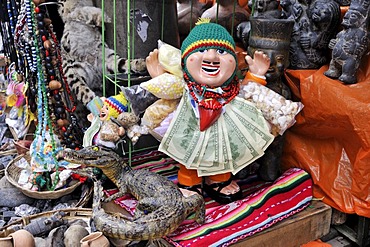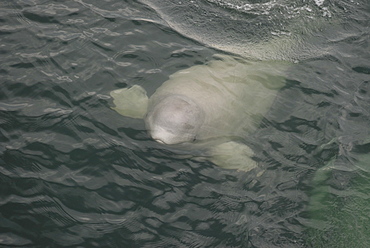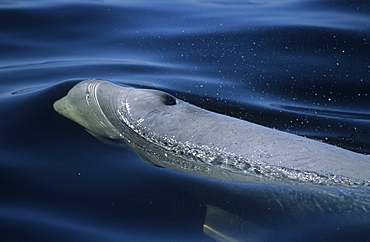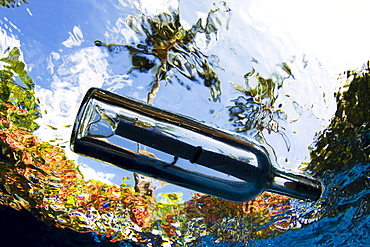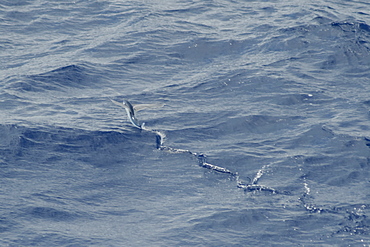Recent searches
Loading...
1178-2785 - Large group of American one hundred dollar bills
1112-2425 - An adult wild saltwater crocodile (Crocodylus porosus), note the missing left front leg, King George River, Kimberley, Western Australia, Australia, Pacific
832-370425 - Battle order of a Roman legion, showcase with figures, Varus Battle or Battle of the Teutoburg Forest, Kalkriese Museum and Park, Osnabruecker Land region, Lower Saxony, Germany, Europe
832-372071 - Orthodox Jew writing a Torah scroll, sculpture at the Diaspora Museum, Beth Hatefutsoth, Tel Aviv, Israel, Middle East
832-343484 - Memorial by Ivan Meoetrovic in honor of Marko Marulic in Split, Split, Croatia, Europe
832-342821 - Fountain pen on a table with notebook, US cash and cup and saucer
832-339326 - Fishing hook snatching money out of the pocket of a pair of jeans
817-459685 - Aerial view of Mediano lake (Embalse de Mediano), Aragon, Spain, Note the clock tower of the old submerged village.
832-296307 - Puppet of a man with cash notes, lucky charm at the stall of a witch, La Paz, Bolivia, South America
832-287353 - Venetian mask with notes and music motif, Venice, Veneto, Italy, Europe
832-275384 - Bronze sculpture of painter Sixto Marco, Elche, Elx, Alicante, Costa Blanca, Spain
832-362011 - The Laxey Wheel transported the water from the Great Laxey Mining Company insideout till 1929, Isle of Man, Great Britain, Europa.
832-266853 - Mendelssohn bank, the first 13 notes of the E-minor violin concert, Leipzig music trail, Leipzig, Saxony, Germany, Europe
832-247499 - Closed ringed notebook, notebook on a wooden desk
832-246437 - Plunmmeting German Federal eagle in front of the German national colors, symbolic of recession
832-247500 - Closed ringed notebook, notebook on a wooden desk
832-199145 - Attention ducks crossing sign, Isle of Mull, Scotland, UK, Europe
817-439145 - Opened in 1931, the Merced Theater in Merced, CA, is an example of Spanish Colonial Revival architecture. Note elaborate neon decoration.
809-5426 - Arrival of the new bell chime, baptised Marie, the biggest bell weighing six tons and playing a G sharp note (sol diese), on 850th anniversary of Notre Dame de Paris, Paris, France, Europe
809-5427 - Arrival of the new bell chime, baptised Marie, the biggest bell weighing six tons and playing a G sharp note (sol diese), on 850th anniversary of Notre Dame de Paris, Paris, France, Europe
990-131 - A surfacing beluga whale (Delphinapterus leucas). Note the open blowhole, eye, distinctive lips, and pronounced forehed. St. Lawrence estuary, Canada Sequence 3/3.
990-128 - Curious Beluga whale (Delphinapterus leucas) surfaces near the boat, its flippers widely spread in order to keep its balance. Note the distinctive lips and the open eye. St. Lawrence estuary, Canada Sequence 2/2.
990-170 - The distinctive colouration pattern of a Minke whale (Balaenoptera acutorostrata). Note that the typical white flipper band extends on to the lower side of the pectoral fin. St. Lawrence estuary, Canada (RR)
990-162 - A friendly Minke whale (Balaenoptera acutorostrata) has rolled onto its right side to take a better look at the excited people on the boat. Note that the left eye is open. St. Lawrence estuary, Canada
990-140 - Minke whale (Balaenoptera acutorostrata) surfacing in the green coloured water. Although exposed, she still has both blowholes tightly closed. Note the pronounced ridge on the rostrum, a main feature of rorqual whales. St. Lawrence estuary, Canada Sequence 1/2.
990-130 - A surfacing beluga whale (Delphinapterus leucas). Note the open blowhole, eye, distinctive lips, and pronounced forehed. St. Lawrence estuary, Canada Sequence 2/3.
832-155877 - Former Brazilian currency, cruzeiro, San Telmo Antiques Market, Plaza Dorrego, Buenos Aires, Argentina, South America
832-149384 - Pages from a choir book from, southern Germany, 17th century, Geigenbaumuseum violin museum, Ballenhausgasse 3, Mittenwald, Upper Bavaria, Bavaria, Germany, Europe
832-144091 - 1 euro coin balancing on U.S. dollar banknotes, symbolic image of exchange rates, strong and weak currency
832-144093 - Euro coins on U.S. dollar banknotes, symbolic image of exchange rates, strong and weak currency
832-130066 - The euro currency under a magnifying glass
832-102891 - Re-enactment of scene from the Vietnam War with life-size dolls in the open-air war museum in Cu Chi, South Vietnam, Vietnam, Southeast Asia, Asia
832-115184 - Person holding a fan of North Korean banknotes
832-98890 - Aerial view, flat roof, notes on the roof, Gutzkowstrasse, Dresden, Saxony, Germany, Europe
832-65321 - Banknote, front and rear, United Arab Emirates Central Bank, 5 Dirhams, currency of the United Arab Emirates
832-65335 - Old banknote, front, Reichsbanknote, 10, 000, 000 mark, Reichsbankhauptkasse, Reichsbankdirektorium, circa 1923
832-65149 - Snow-covered warning sign on Mt Schauinsland, Black Forest, Freiburg district, Baden-Wuerttemberg, Germany, Europe
832-65327 - Old banknote, front and rear, Reichsbanknote, 20 reichsmark, Reichsbankdirektorium, circa 1929
832-65322 - Banknote, front and rear, 1 Riyal, Central Bank of Oman
832-69637 - Computer with Facebook logo and sticker with the word party, symbolic image for Facebook parties
832-65339 - Old banknote, front and rear, 1 peso oro, Dominican Republic, Banco Central Republica Dominicana, around 1987
832-65340 - Banknote, front and rear, 1 riyal, Saudi Arabia, Saudi Arabian Monetary Agency
832-65336 - Banknote, front and rear, 25 rupees, Seychelles, Central Bank of Seychelles
832-65333 - Old banknote, front and rear, 5 Turkish Lirasi, Turkish banknote, circa 1970
832-65331 - Old banknote, front, Reichsbanknote, 50, 000, 000 mark, Reichsbankdirektorium, circa 1923
832-65329 - Old banknote, front and rear, Reichsbanknote, 1000 reichsmark, Reichsbankdirektorium, circa 1910
832-65318 - Banknote, front and rear, Central Bank of Oman, 200 Baisa, currency of the Sultanate of Oman
832-65325 - Old banknote, front and rear, 10 Canadian Dollars, Bank of Canada, circa 1989
832-65330 - Old banknote, front and rear, Reichsbanknote, 100 reichsmark, Reichsbankdirektorium, circa 1935
832-65317 - Promissory note, front and back, to the value of 150 pfennig from the savings bank of the city of Oldenburg, Jever
832-65328 - Old banknote, front, Reichsbanknote, 100 mark, Reichsbankhauptkasse, Reichsbankdirektorium, circa 1920
832-65316 - Banknote, front and rear, United Arab Emirates Central Bank, 100 Dirhams, currency of the United Arab Emirates
832-65332 - Old banknote, front and rear, 100 kronen, Austro-Hungarian Bank, circa 1922
832-65323 - Old banknote, front and rear, 5 British Pound, Bank of England, circa 1990
832-61716 - Offerings from pilgrims who receive the blessings of Bahubali by local priests on Indragiri hill in Sravanabelagola, Karnataka, India, Asia
832-65315 - Banknote, front and rear, United Arab Emirates Central Bank, 10 Dirhams, currency of the United Arab Emirates
832-65324 - Banknote, front and rear, 1 Riyal, Central Bank of Oman
832-65343 - Old banknote, front and rear, 10 rupees, Sri Lanka, Central Bank of Sri Lanka, around 1987
832-51010 - Banknotes on a street vendor's stall, Kathmandu, Kathmandu Valley, Nepal, Asia
832-40507 - Doctor's stethoscope and a five euro banknote, symbolic image for the payment of five euro per doctor visit
832-42351 - Passport of the Federal Republic of Germany, guide book for Canada, various Canadian dollar banknotes
832-42811 - Banknotes, different currencies from around the world, foreign exchange
832-42353 - International driving license, passport of the Federal Republic of Germany, guide book for Canada, various Canadian dollar banknotes
832-42354 - Passport of the Federal Republic of Germany and various Canadian dollar banknotes
832-42357 - Ignition key, international driving license, passport of the Federal Republic of Germany, guide book for Canada and various Canadian dollar banknotes
832-42813 - Banknotes, different currencies from around the world, foreign exchange
1113-67835 - noodle shop, fresh noodles, sales, market hall, paying with Yuan note, cash
1113-67504 - Yuan, Renminbi (RMB) means "The People's Currency", bank note, portrait of Mao Tse Tung, Chinese currency
1113-67506 - Yuan, Renminbi (RMB) means "The People's Currency", bank note, portrait of Mao Tse Tung
817-407726 - Notes to God in the Western Wall in Jerusalem, Israel
1116-29357 - Hawaii, Underwater view of a message in a bottle.
857-74712 - A young woman makes a note in a geocaching logbook in Baltimore, Maryland.
857-3916 - Tracking the bear. Jaypity and Daniel tracking the polar bear. The two note that the bear has recently killed a seal and eaten it at this seal hole. Jaypity takes a looks down the seal hole.
1194-1899 - India visits to post, tsunami site in srayickadu kollom, kerala, where cnewa funds relief efforts through the social services office of the syro, malankar church. Family of shaji gobal (47), fisherman, his wife jayasree (38) and their surviving daughter shinthu (15). They lost their other daughter, chikku (17) in the disaster. Note that the new house which they are in was built and donated by the matha amrithanandamayi mssion ashram, as were 1300 other houses in the area. Cnewa had managed to build one house during the 13 months since the disaster. Sp1140194
988-207 - Entrance to Fingal's Cave, Staffa. Note the basalt columns which are not always six-sided. Hebrides, Scotland
917-323 - Needle Fish Species (scientific name unknown) unusual, leaping to avoid a predator, note the trail on the surface of the water made by its tail. Maldives, Indian Ocean.
917-407 - Flying Squid Species in mid-air (Ommastrephes bartramii). Extremely rare unusual image. South Atlantic Ocean. MORE INFO: Flying Squid use membranes between their tentacles (visible on pic) & two fins at the rear of the mantle to glide through the air in a similar way to flying fish. These unique adaptations allow them to avoid predation more easily. Ommastrephid squids are among the strongest swimmers in the Cephalopoda. A number of species are fished commercially. This particular species (Ommastrephes bartramii), is commonly known as "Neon Flying Squid" due to its colouration and its ability to glide over the ocean surface as seen in the photographs. Please note that this is a genuine image of a wild animal in its natural environment. It is not a digital manipulation.
931-496 - Whale hunters. Note the typically small boat and home made harpoon- an adapted rifle. Eastern Caribbean
1034-127 - NOTE: High path to top of island used by Snares crested penguins (Eudyptes atratus), Snares Islands, New Zealand, Pacific Ocean.
931-288 - Sperm whale (physeter macrocephalus) A pair of sperm whales pass a whale watching boat, note the very wrinkled skin.The Gulf of California.
917-257 - Flying Fish Species, note the trail on the surface of the water made by its tail, South Atlantic Ocean.
917-406 - Flying Squid Species in mid-air (Ommastrephes bartramii). Extremely rare unusual image. South Atlantic Ocean. MORE INFO: Flying Squid use membranes between their tentacles (visible on pic) & two fins at the rear of the mantle to glide through the air in a similar way to flying fish. These unique adaptations allow them to avoid predation more easily. Ommastrephid squids are among the strongest swimmers in the Cephalopoda. A number of species are fished commercially. This particular species (Ommastrephes bartramii), is commonly known as "Neon Flying Squid" due to its colouration and its ability to glide over the ocean surface as seen in the photographs. Please note that this is a genuine image of a wild animal in its natural environment. It is not a digital manipulation.
931-172 - Blue whale (Balaenoptera musculus) Gulf of California. A very relaxed blue whale surfaces right alongside a tourist boat, note the pronounced vertebrae.
931-495 - Whale hunters. Note the typically small boat and home made harpoon- an adapted rifle. Eastern Caribbean
917-405 - Flying Squid Species in mid-air (Ommastrephes bartramii). Extremely rare unusual image. South Atlantic Ocean. MORE INFO: Flying Squid use membranes between their tentacles (visible on pic) & two fins at the rear of the mantle to glide through the air in a similar way to flying fish. These unique adaptations allow them to avoid predation more easily. Ommastrephid squids are among the strongest swimmers in the Cephalopoda. A number of species are fished commercially. This particular species (Ommastrephes bartramii), is commonly known as "Neon Flying Squid" due to its colouration and its ability to glide over the ocean surface as seen in the photographs. Please note that this is a genuine image of a wild animal in its natural environment. It is not a digital manipulation.
917-349 - Flying Fish Species (scientific name unknown) rare unusual image, in mid-air. South Atlantic Ocean. MORE INFO: Note the trail on the surface of the water made by its tail.






















